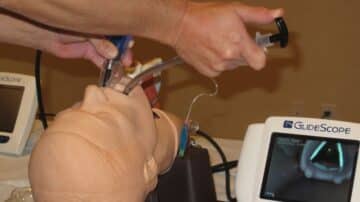More Articles – Chest Tube, Endotracheal Intubation, Featured, Glidescope Intubation, King Tube, Medical General
Videolaryngoscopy has quickly become a popular method for airway management because it provides better visuals of the glottis. Failed intubations have decreased since more clinicians have begun to rely on videolaryngoscopy and the greater visibility it provides. Awake videolaryngoscopy is…
Read More



